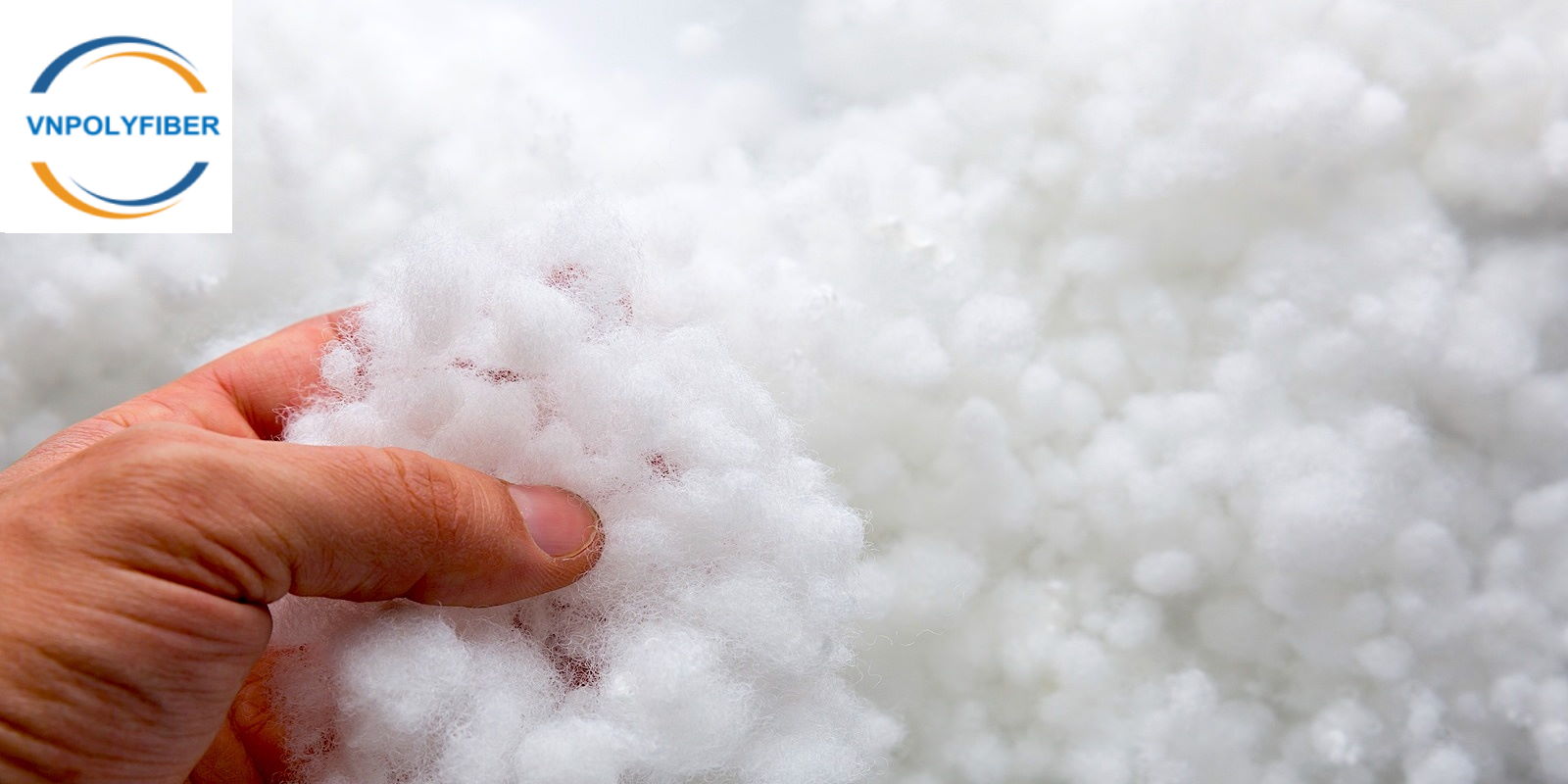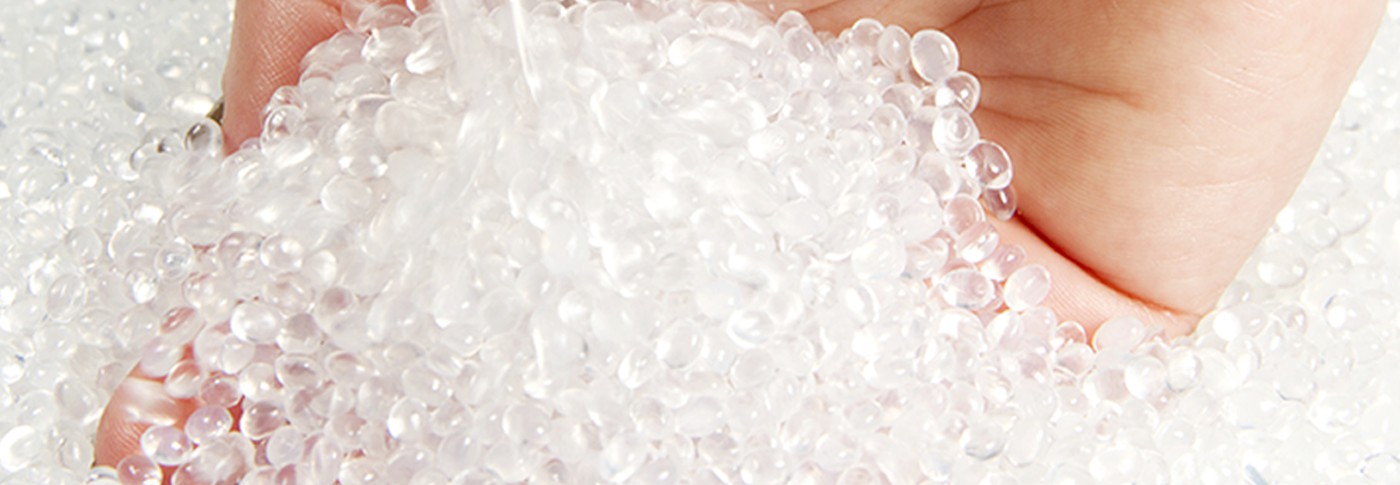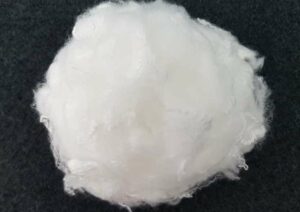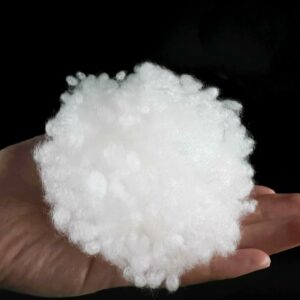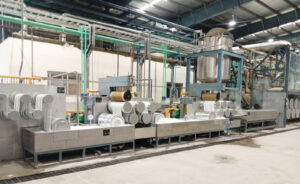Polyester fibers
The starting point is always nature (the sun).
1. Among other substances, sunlight also causes dextrose to be formed in plants, the fundamental building block of the cellulose molecule.
2. Cellulose constitutes the fundamental structure of cotton plants, which are the source of cotton fiber.
3. Nutrients in food, which are transformed into chemical compounds, are the basis for the growth of wool and hair.
4. The silkworm collects a protein depot from its nourishment which is spun to endless threads through its glands.
5. After being treated with chemicals, the short fibers contained in the wood are transformed into an aqueous solution and then pressed through spinnerets. After drying, cellulosic fibers are obtained.
6. The raw materials for synthetic fibers generally stem from crude oil, which originates from the transformation of huge quantities of marine organisms.
The main difference between man-made fibers and natural fibers
In contrast to natural fibers, the composition and structure of man-made fibers can be determined by man. This lends polyester fibers special properties and renders them useful for many different purposes.
With the exclusion of ceramic or glass fibers, all man-made fibers, as well as natural fibers, are organic fibers.
Production of spin masses
To manufacture man-made fibers, viscous, stringy liquids are needed. The matter that results from dissolving or heating is called the spin mass. Today, three manufacturing processes are primarily used: polymerization, polycondensation, and poly-addition. The resulting spinnable matter from these processes is called a polymer.
Types of man-made fibres
As a rule, a distinction is made between man-made fibers from synthetic polymers and those from cellulosic polymers which both belong to the class of organic fibers. The ACRYLIC-, POLYAMIDE-, POLYESTER- and ELASTANE FIBRES belong to the man-made fibers made from synthetic polymers. In the case of man-made fibers manufactured from cellulosic polymers, the distinction is e.g. between the VISCOSE- and the ACETATE FIBRES.
Spinning process
To produce filaments (continuous yarns) from the spin mass, various spinning processes are employed: the dry spinning process, the wet spinning process, and the melt spinning process. In all cases, the spinnable material is pressed through the extremly small openings of a spinneret and upon exiting the spinneret the filaments produced are either gathered to a filament yarn and spooled, or joined to form tows. After spinning the man-made fibers the parallel alignment of the molecules is not yet optimal. Man-made fibers have to be drawn to acquire the ultimate properties for the yarns. The extent to which they are drawn depends on their intended use.
Forms of man-made fibers
The spin mass is pressed through the so-called spinnerets. Depending on the number of holes monofilaments (one hole) or multifilaments (several holes) are produced. Depending on the shape of the spinneret holes, different cross section shapes are obtained in the melt spun man-made fibers (from round, multi-lobed, triangular, star-shaped to ribbon-shaped). They exert a decisive influence on the properties of the textiles produced from them.
Texturing
Texturing is a procedure used to increase the volume and the elasticity of filament yarn. The essential properties of textured yarns and the products made from them are softness, fullness, a high degree of elasticity, thermal insulation, and moisture-transporting properties. All yarns which can be shaped by heat are suitable for texturing. The most important texturing processes are FALSE-TWIST TEXTURING, STUFFER-BOX TEXTURING, and AIR-JET TEXTURING.
Production of staple fibers
In all spinning processes, filaments are formed from the spin mass of the spinnerets. If the production of staple fibers is desired, i. e. short fiber sections for the spinning mill, thousands of filaments are combined to form tow and cut into staple fibers. While during the production of filament yarns each single filament bundle exiting the spinnerets is wound onto a spool, in the production of staple fibers numerous filament bundles are first combined to form a thick filament tow which can be crimped and cut into staple fibers. By cutting the tow, staple fibers are obtained which can be compared in length, e.g. with wool or cotton. Depending on the process used, the tow is either cut directly by the manufacturer and pressed into bales for delivery, or cut or torn into staple fibers using a so-called converter at a later stage by a downstream manufacturer.
Properties and Possible Use of Man-made Fibres
Man-made fibres Fibres with (almost) unlimited possibilities
Cellulosic man-made fibers
Synthetic man-made fibers
Continuous or cut
The most important processed man-made fibers are filament yarns and staple fibers. Filament yarns are endless single threads. The number of holes in the spinneret determines the number of filaments in the yarn.
Staple fibers are man-made fibers cut into specific lengths, which are spun, like cotton and wool, into spun yarns by the textile industry.
By applying pressure and heat, filament yarns can be permanently crimped or textured”. This gives them a voluminous, bulky feel, improved insulation properties, better transport of body moisture, and elasticity.
Man-made fibers can be combined very well, both with each other and also with natural fibers – and it is through this combination of source materials with varying properties that many textiles derive their real utility value.
From nature to textile diversity
Like natural fibers, man-made fibers are made up essentially of the following elements:
carbon
hydrogen
oxygen
nitrogen
A distinction is made between cellulosics and synthetic man-made fibers. With cellulosic man-made fibers (e.g. viscose), cellulose from wood is used as the raw material. In the case of synthetic man-made fibers (e.g. polyamide, acrylic, polyester), the raw material is crude oil, which is chemically transformed.
The manufacturing process can be adapted to achieve specific properties in the final man-made fibers.
This means man-made fibers can be developed to meet certain functional requirements and end-uses. They may, for example, be thinner than silk, or have a greater volume than wool, they may insulate against cold or keep cool, transport moisture, be bright or dull.
Comfort for our daily life
People today have demands that can only be satisfied with man-made fibers.
Polyamide and elastane, for instance, are the secret behind the good fit of tights and leggings. No one would want to be without viscose in the summer now.
Membranes improve the properties of leisure and sportswear, while microfibres produce fabrics that are the finest possible, without becoming unstable.
Without man-made fibers, it would be impossible to cover the needs of the world population. In 2013 their share of world fiber production was 70%, equivalent to a volume of 60,3 million tons.
Cellulosic man-made fibers
In 2013 5.9 million tons of cellulosic man-made fibers were produced worldwide.
Viscose
Synthetic man-made fibers
- Acrylic fibers
- Elastane fibres
- Membranes
- Microfibres
- Polyamide fibers
- Polyester fibers
Man-made fibers: Easier to care for, more economical, and better quality retention.
- Man-made fibers give dirt little chance.
- Man-made fibers save time, effort, and money.
- You get a more lasting pleasure from beautiful fabrics made from man-made fibers.
Polyester Fibers
The world leader among synthetic man-made fibers.
Polyester was one of the great man-made fiber discoveries of the forties and has been manufactured on an industrial scale since 1947. Polyester fibers are the first choice for apparel and are used in trousers, skirts, dresses, suits, jackets, blouses, and outdoor clothing.
Blends with cotton and virgin wool are very popular. They are often referred to as the “classical blend”. This is normally a combination of 55% polyester and 45% wool.
In the year 2013, 198,000 tons of polyester fibers were produced in Germany. This makes them the synthetic man-made fibers with the highest production figure.
Polyester fibers are produced by the melt spinning process. Raw materials are heated to a spinning mass, which is then pressed through spinnerets. Manufacturing techniques are now developed to the point where they can produce fibers adapted to suit the widest possible applications: they can have round, oval, or angular profiles, making them firm to the touch. They can be dull, bright, or glittery.
On care labels, polyester fibers are often given the abbreviation: “PES”.
Properties
Quality is much prized by processors and consumers.
Amongst the most important properties:
Polyester fibers are particularly resistant to light and weather and can withstand climatic effects.
They can be used where lightness and fineness are primary requirements.
Polyester fibers are very well suited to blends with natural fibers.
Fabrics in 100% polyester, or blends with an appropriately high proportion, are very crease-resistant and retain shape even when affected by moisture.
Polyester fibers have good moisture transport and dry quickly.
They are easy to care for.
High tenacity ensures above-average wear qualities.
Heat treatment results in permanent creases in trousers and skirts.
Source: Industrievereinigung Chemiefaser e.V.
Polyester fiber
VNPOLYFIBER offer polyester staple fiber with deniers from 0.9D to 25D, cutting length from 25 mm to 76mm. Our polyester staple fiber are in white and black colors, recycled grade, hollow conjugated, hollow non conjugated, hollow siliconized, hollow slick, solid fiber, spinning fiber, etc…
Our sales volume annually increases and we can guarantee :
- excellent product quality, due to the equipment of production with new high-tech equipment, the involvement of well-trained highly qualified specialists and the control of technological parameters at all stages of production;
- fast delivery due to an extensive partnership with many forwarders, suppliers and factories located across Viet Nam;
- delivery with mandatory compliance with the established deadlines of any volume of products;
- optimal prices and favorable terms of cooperation.
Since established in 2017, we have been motivated by the principles of long-term cooperation with our partners, mutually beneficial and to achieve win win situations.
Preferential characteristics and properties of polyester fiber
The manufacturing technology of these fibers consists in melting and forming polyesters, followed by pressing through a plate with many microscopic holes.
The formed threads retain the properties of the raw material and are distinguished by the following advantages:
- high temperature resistance and fire resistance;
- longitudinal and transverse tensile strength;
- resistance to shock loads, abrasion, multiple bends;
- resistance to ultraviolet light, high/low temperatures, sudden
- temperature changes, aggressive environments, bacteria, fungi, mold, etc.;
- good elasticity and thermal insulation;
- small specific gravity;
- low level of water absorption.

